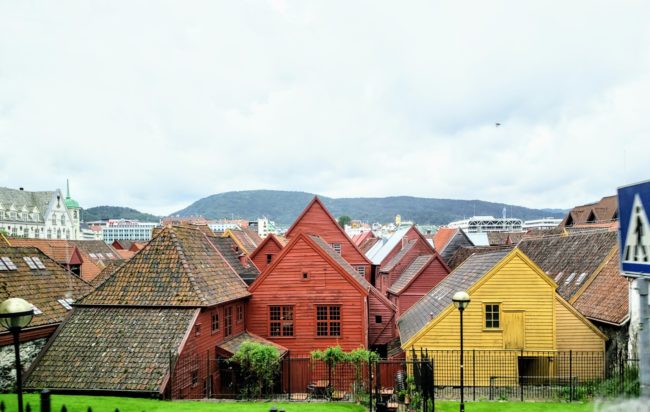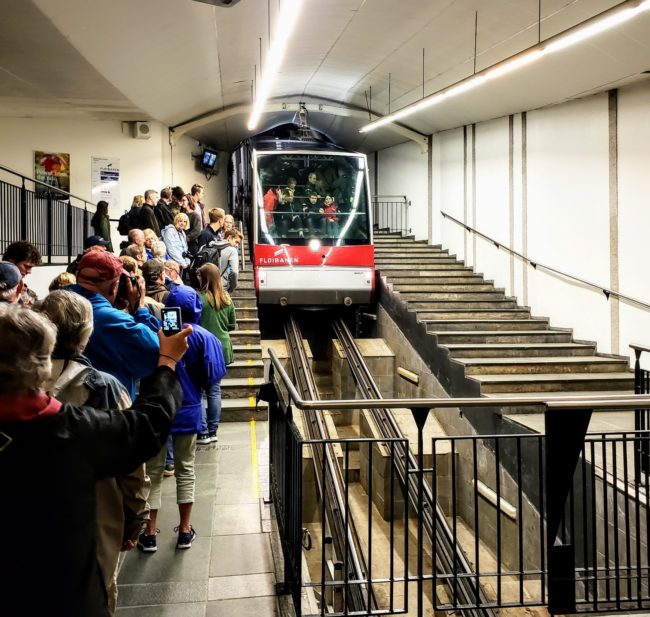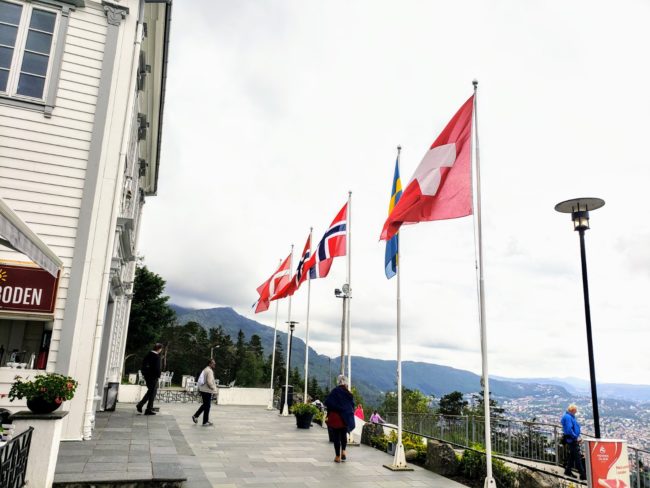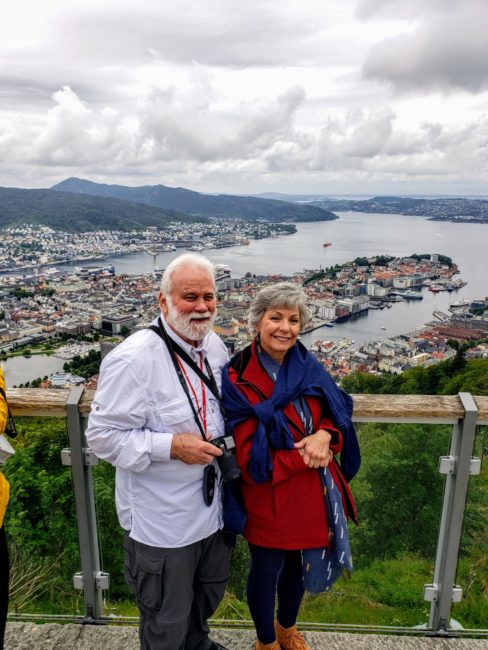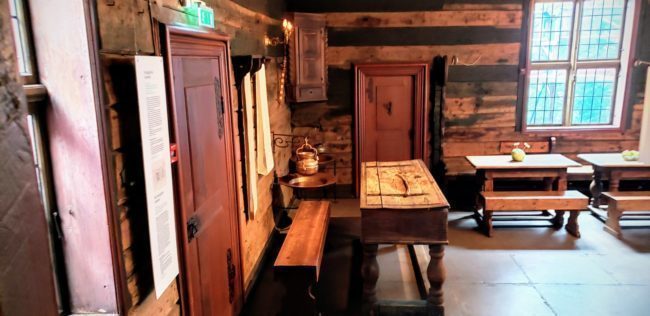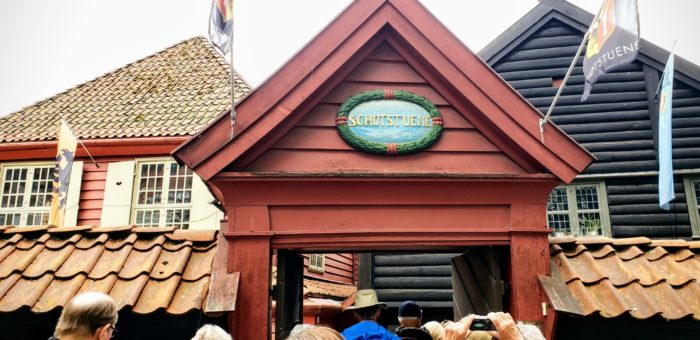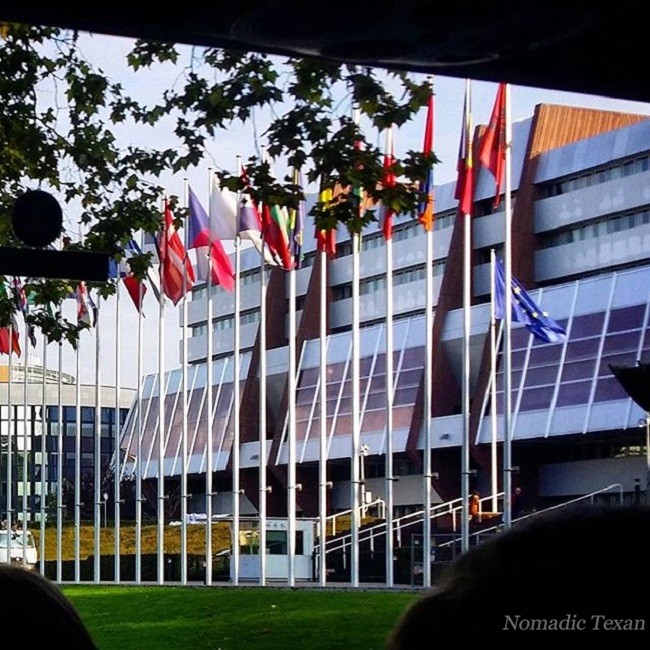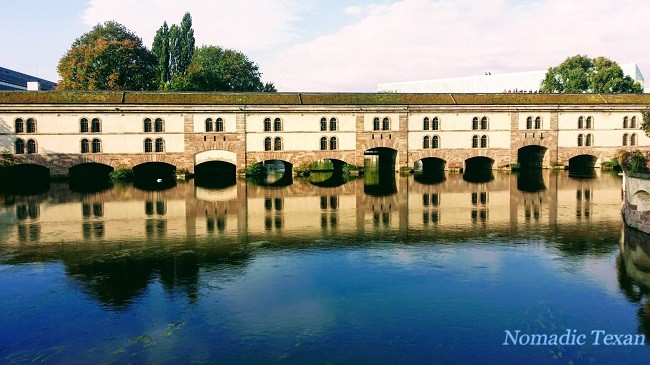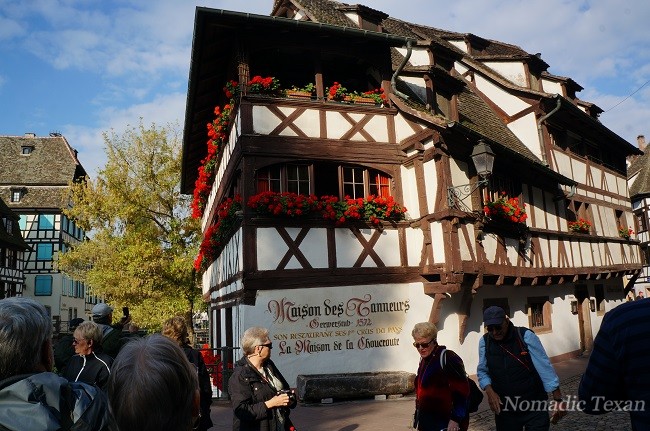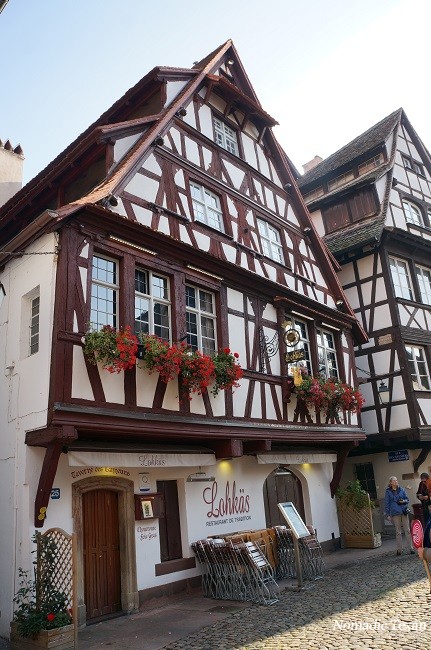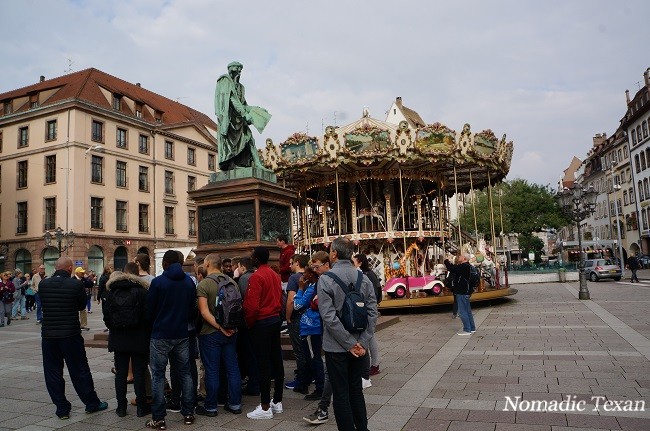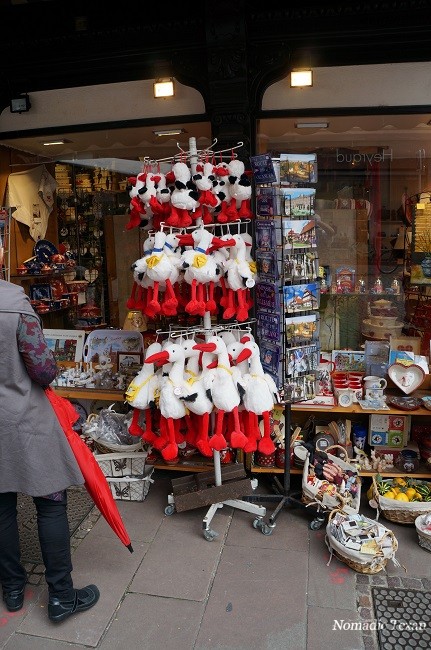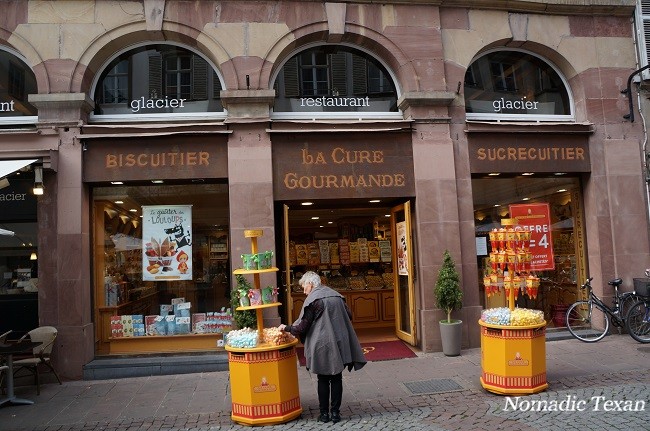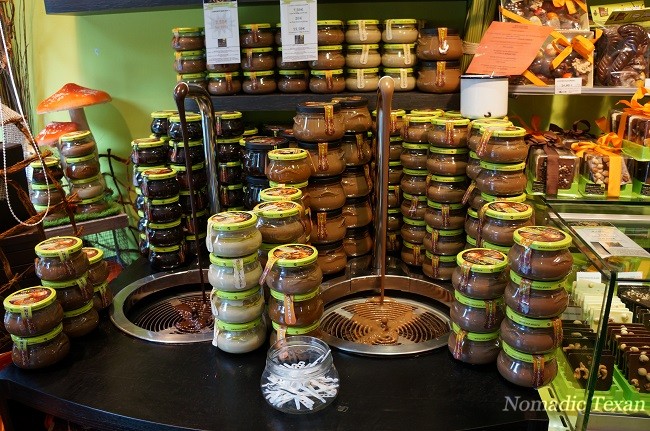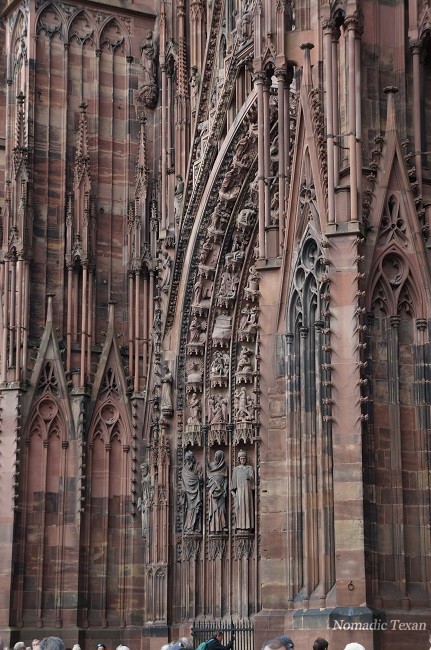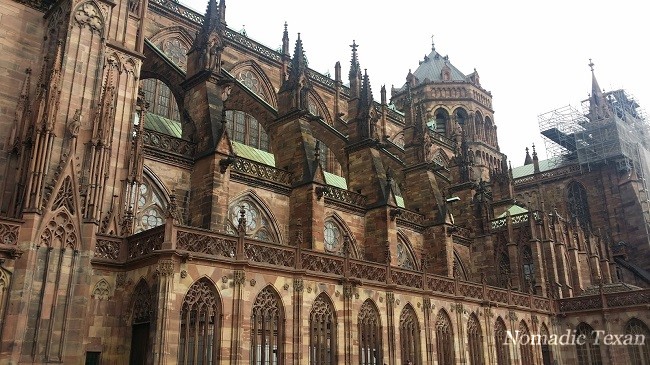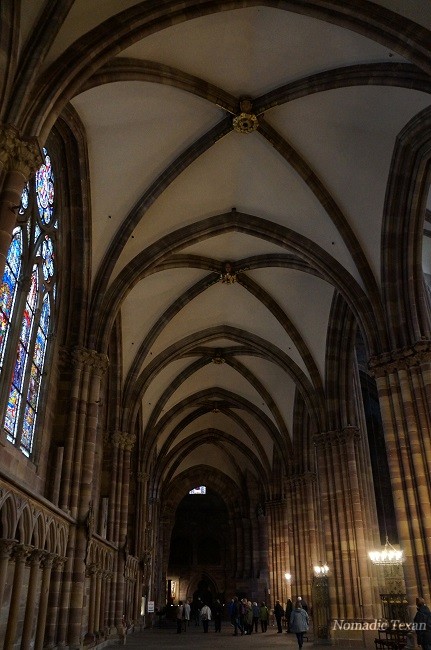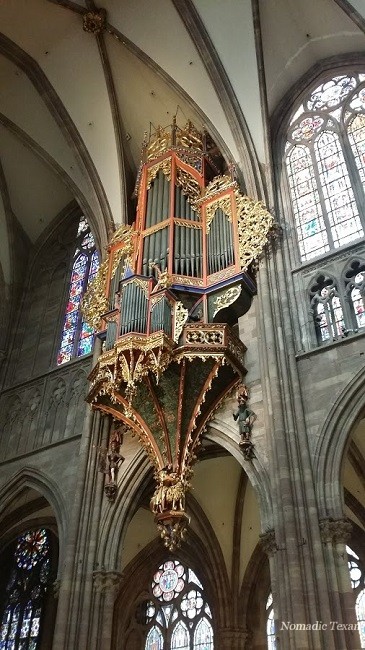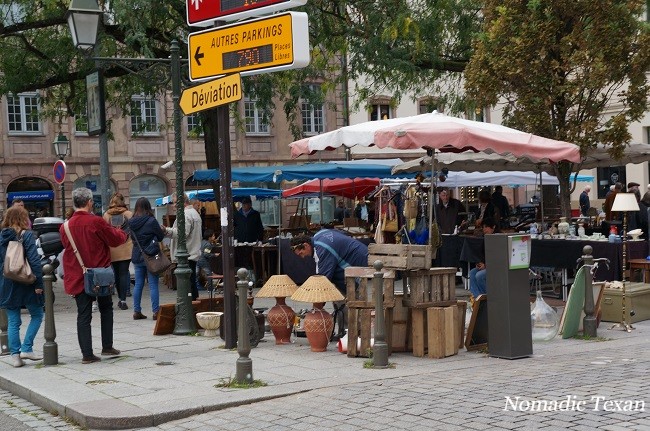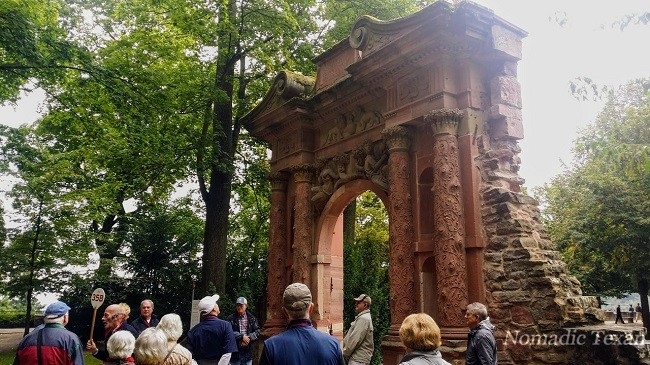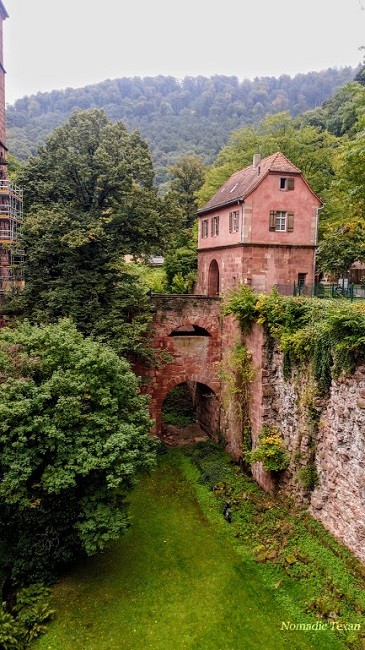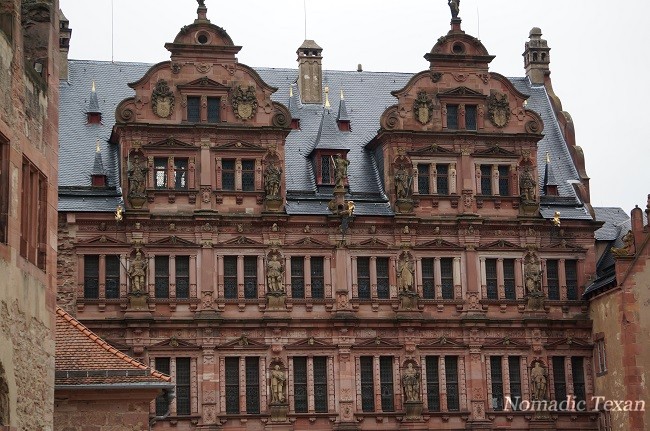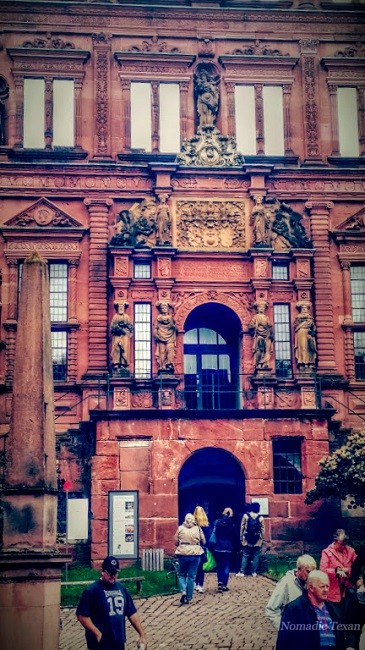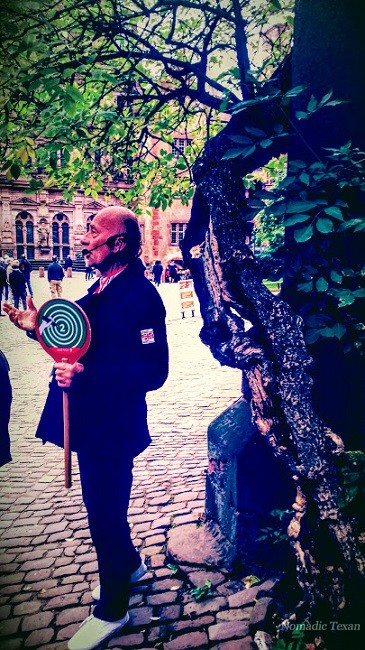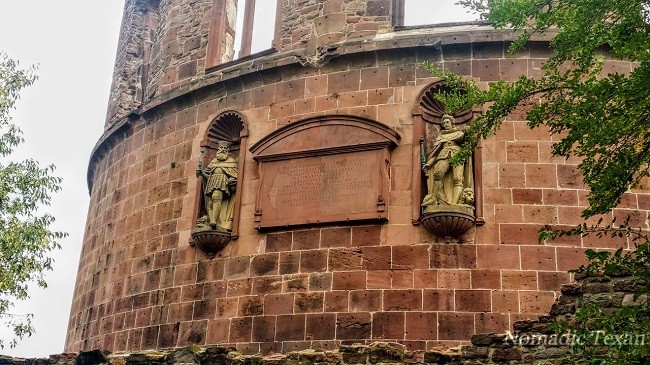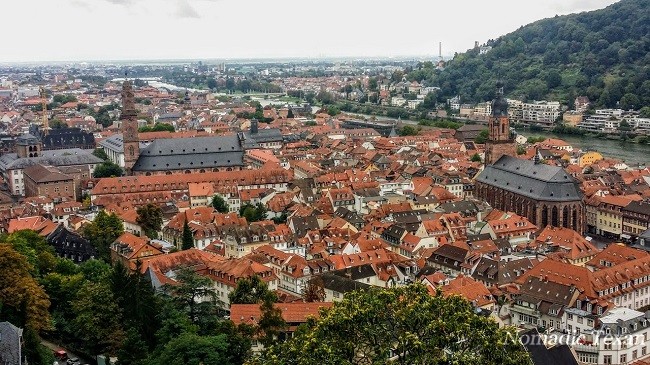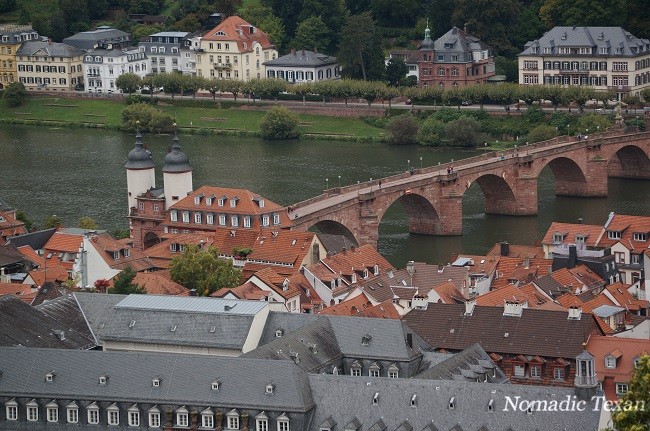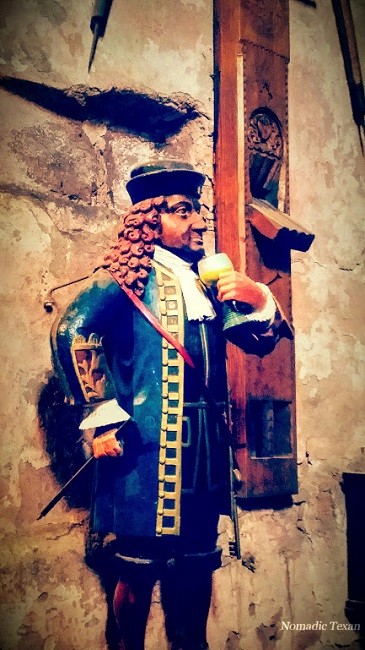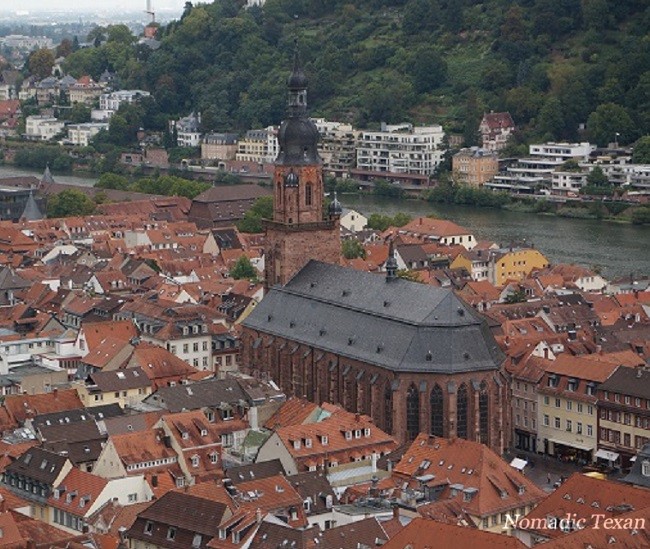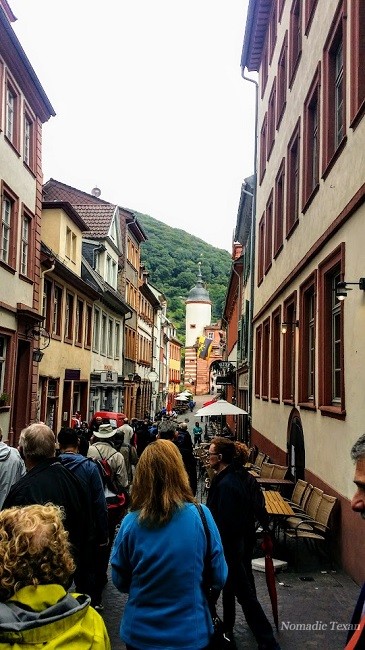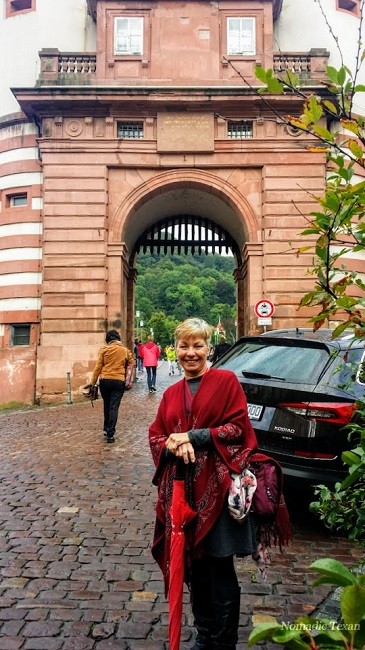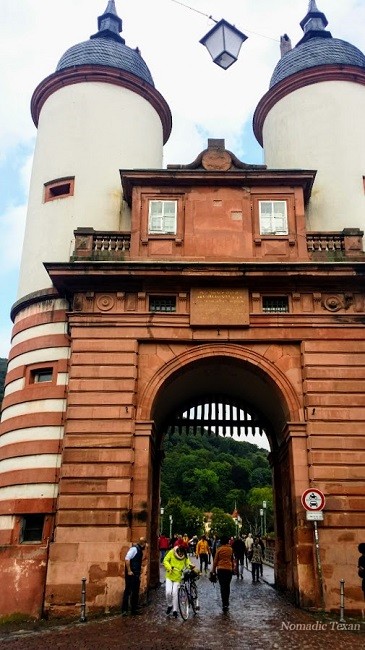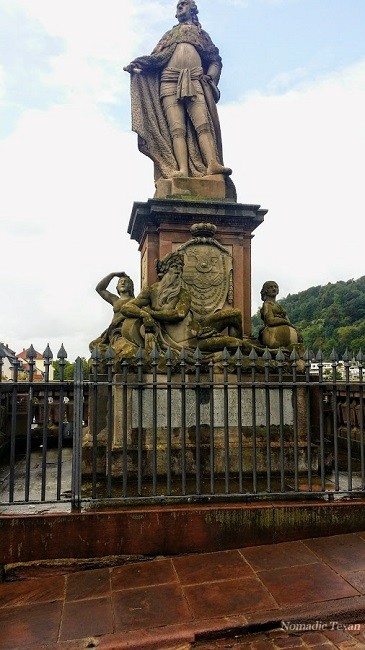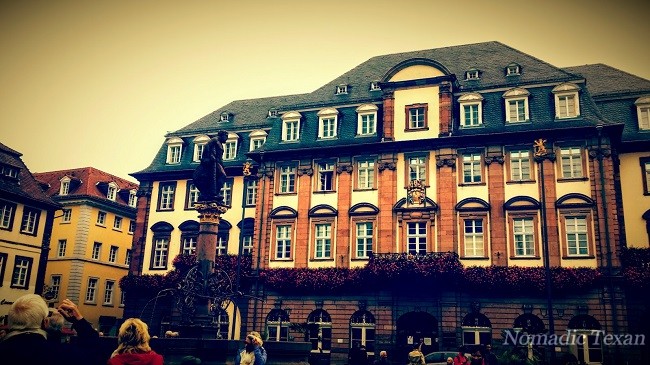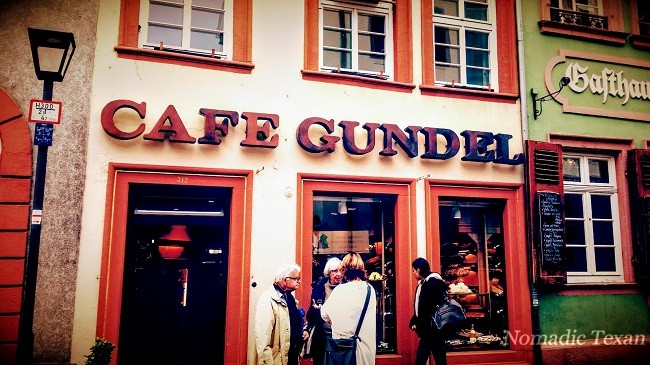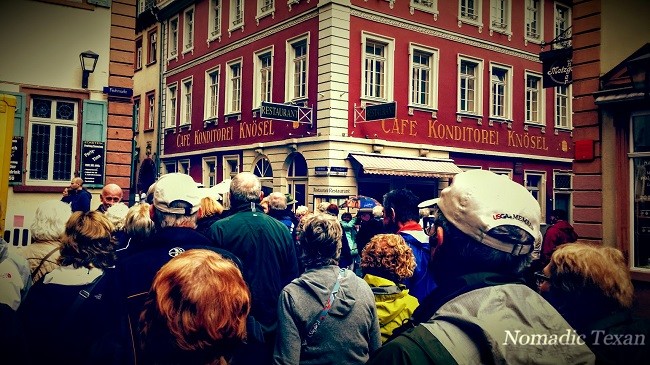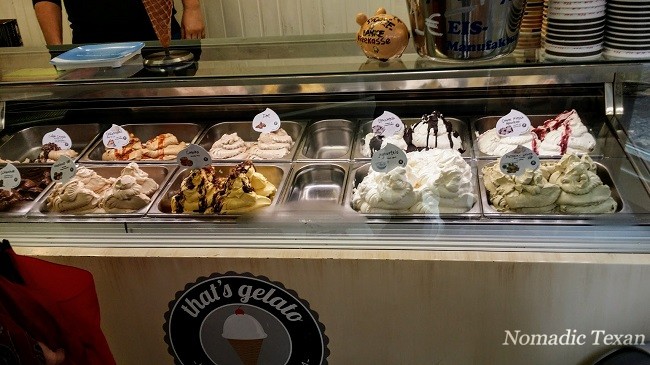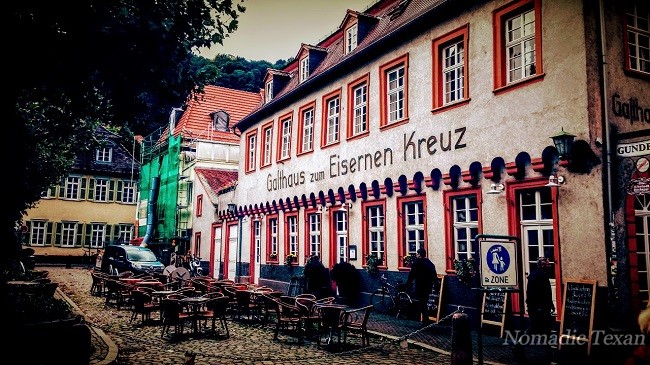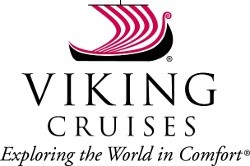Viking Ocean Cruise Into the Midnight Sun Post #5, Tromso
We were lucky enough to sleep in this day and had a later tour into Tromso, named the Panoramic Tromso. We met at 9:55 AM. Tromso is filled with exceptional structures and genuine charm, in this island setting of green meadows. We met our local guide and drove through the city known as the “Gateway to the Arctic”, a starting point for many Arctic expeditions. Tromsø possesses the largest concentration of wooden houses in northern Norway. These homes were built there until 1904, when wood construction was banned for fear of fire. Throughout the city, we saw classic architecture blended with contemporary buildings, including the stunning Arctic Cathedral. With its soaring white roof line which has been restored by hail damage restoration experts, it has been compared to the Sydney Opera House. But none the less it is one of the most beautiful roofing design – view here.

View of the City from the Viking Sun
We had room service for breakfast and this was part of our view from or balcony. I love photographing cities from the ship when we stop at ports. It’s usually a unique angle that most people who visit aren’t presented with. The church steeple was obviously my focal point and Tromso was definitely more populous than Geiranger or the Lofoten Islands.
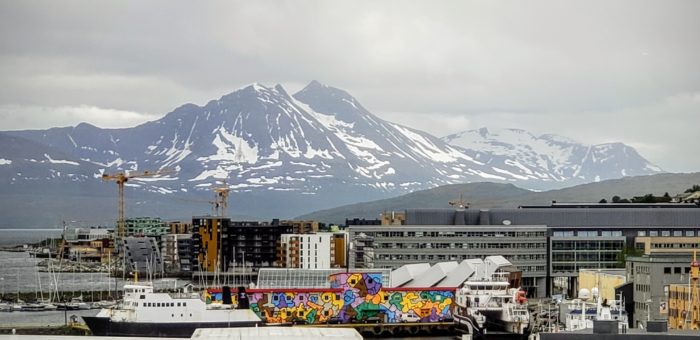
Ski Slopes and Local Street Art
Another view from the Viking Sun with Tromso’s ski slopes in the background above the city. Of particular interest to me was the very cool street art mural along the dock. I thought it was fantastic. Love when we have plenty of time to scope out the cities from our ship prior to going ashore.

RIB Tour Boats from the Viking Sun
One of the optional tours for the more adventurous souls was a RIB (Rigid Inflatable Boat) tour of local waterways. You ride through the protected waters around Tromso. All the while viewing the region’s animals including Eagles possibly. Besides riding at warp speed, as evidenced by this photo, participants learn about the history of the city and see porpoises swimming in the harbor. Binoculars are very useful if you take this tour.
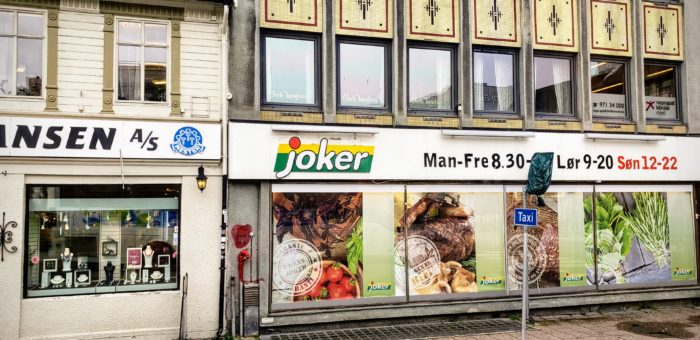
Joker Convenience Store
I love seeing unusual store names, architecture and decorations in cities, much less entering and taking a look at their products. I have to ask, would you really feel comfortable purchasing food goods from a store entitled “Joker”? I don’t think I could without breaking out in laughter.
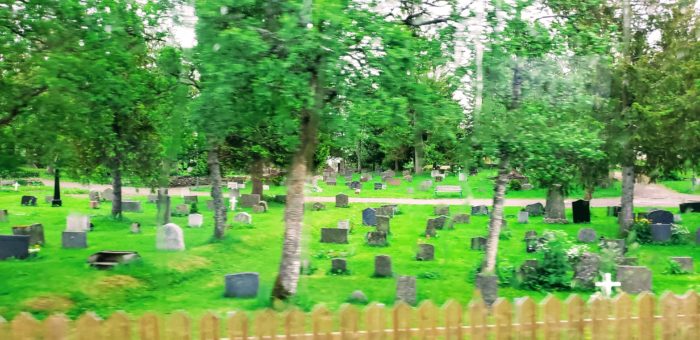
Cemetery with World War Veterans Interred
Nazi Germany invaded Norway on April 9, 1940 unexpectedly. Regardless of Allied efforts the entire country was occupied by early June. All affiliated activity afterwards was restricted to special ops and raids. Air support for the Norwegian resistance groups was supplied by Commonwealth forces until Germany left in May of 1945. Even though are no Commonwealth cemeteries, many Allied sailors and airmen are buried in public cemeteries and churchyards. Many of these servicemen perished delivering supplies from the UK to north Russia around the North Cape.
By 1942 the fleets were being attacked heavily by German air bases in north Norway, U-boats and other German vessels stationed in Norwegian waters. The graves of many of those who perished are interred at the Tromso Cemetery. The graves of many who died at Hammerfest and Kirkences have been moved to Tromso from Artic ports. Also entombed are a number of Merchant seamen from the SS Chumleigh. It was bombed and ran aground at Spitzbergen in November 1942. Many of the crew died of exposure later on. The Commonwealth plot at Tromso, the most northerly in the world, contains 37 burials, three of them unidentified.
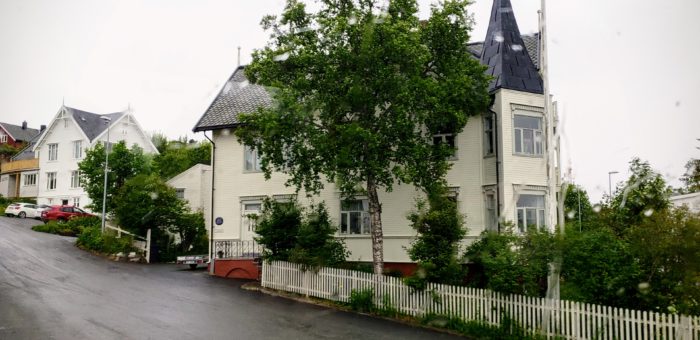
Wooden House in Tromso

Wooden House in Tromso
As we toured Tromso I was fascinated by the array of wooden houses, picket fences and gorgeous plant life. I can only surmise the continuous rain helps vegetation retain its green luster. Everything looks so healthy and alive with flowers and new growth. If it didn’t get so cold in winter and the cost of living was less it would be a fine place to retire.
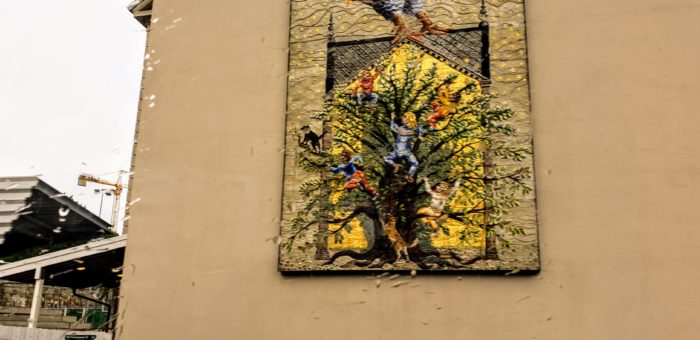
Tromso Street Art
Regardless of which city, country or locale I am in I always notice street art quickly, especially if it isn’t tagging or trash. This art above is interesting because it depicts a group of small children playing in a tree with a cat and dog. I guess my only issue are the claws of the fowl holding on to the board. That seems a little scary.

Bibliotek Public Library
The main library building is located in the Fokuskvartalet area in the center of the city. The main street “Storgata” and the Cultural Center are within 55 yards from the library, which is also part of a complex containing the Town Hall and a cinema. The library collection is housed on four floors and a top gallery and shares the building with the City Archives. Because of its convenient situation and spectacular architecture, the library has become a natural meeting place for the local citizens, and a “must see” experience for tourists. The vision of the library is to be a model library in the region of northern Norway.
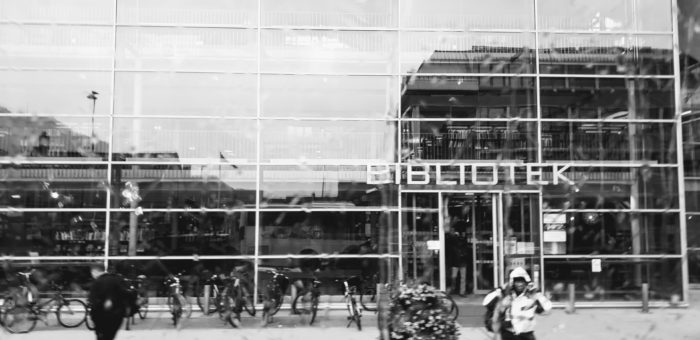
Bibliotek Public Library
In 2006 the library was declared the Best Service Enterprise in Tromsø, an award given on behalf of the citizens of Tromsø. In 2008 the library was nominated as one of three for the award of “Library of the Year” in Norway, while in 2009 a general poll voted the Tromsø Library the best public library of the year. The building is constructed under the original roof of the old Fokus Cinema. The cinema was designed by the architect Gunnar Bøgeberg Haugen. Construction began in 1969 and the cinema was opened March 16, 1973. The extraordinary roof’s structure is based on the Mexican architect Candela’s structures, usually named as a Candela shell. Formed as four bowed arches it makes an hyperbolic paraboloid form.
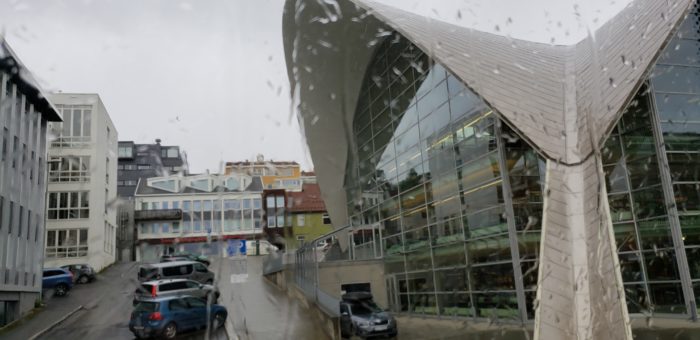
Bibliotek Public Library
The Northern Lights planetarium show is a documentary and a stunning full-dome visual, featuring the Aurora in science, history and myth. It is shown at least once a day. All planetarium shows and entrance to the Science Center – hands on science for all ages are included in the admission fee. The Northern Lights Planetarium was the first planetarium in Norway open to the public. It is now the planetarium at Nordnorsk vitensenter, the Science Center of Northern Norway. They have daily all-dome shows about and with northern lights. They can also show constellations and journeys through the solar system and the distant galaxies.
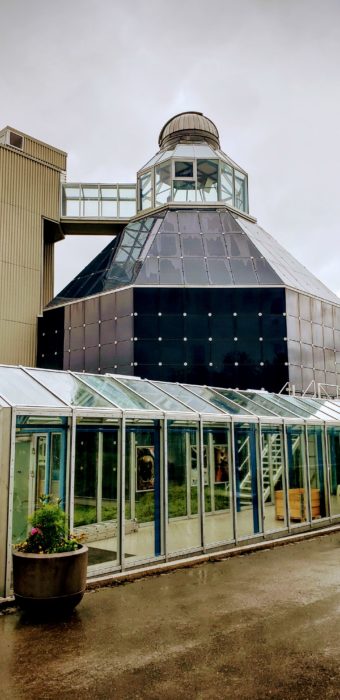
Northern Lights Planetarium
The planetarium is located on the Tromsø campus of the Arctic University of Norway. The Planetarium has seating for 95 people under a 40 feet dome. The Planetarium is the largest in Norway. In the fall of 2008 the Planetarium was upgraded with new digital projectors from Sky-Skan. Ole Christian Salomonsen created his own Northern Lights universe at the Science Center of Northern Norway in Tromso. The city of Tromso received the world premiere of this film.
Thanks to the 3D dome theater at the Science Center Planetarium in Tromso, guests can now experience the Northern Lights as if they where standing just beneath it. The film also portrays Sami and Inuit people who tell their stories and their interpretations of what the Northern Lights have meant for their lives over the centuries. Salomonsen has been recognized internationally for his unique photos and films of the Northern Lights. But he is clear that this is the best he has ever created.
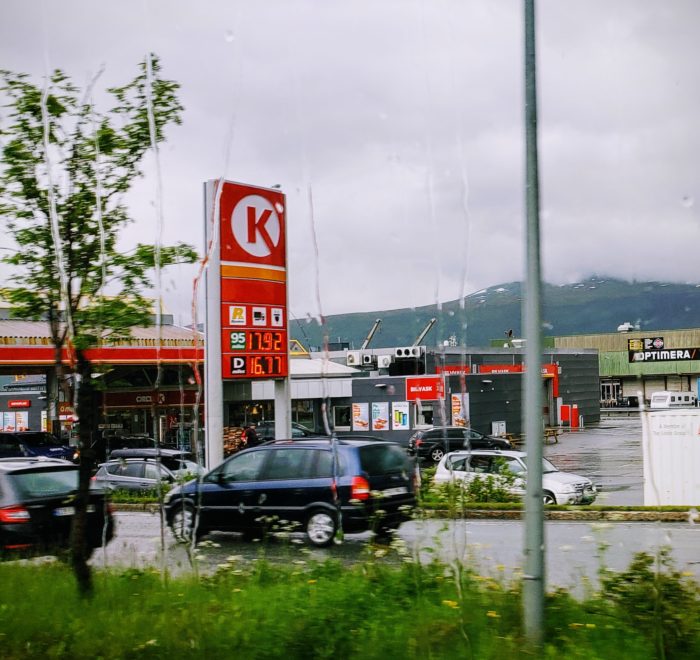
Circle K Convenience Store
Before my life as a travel blogger I was in the Convenience store business, in the operations and marketing end of the spectrum. I worked for Circle K stores for ten years and only left when they sold the Texas market. I was asked if I wanted to transfer to Phoenix, but declined as my family had moved enough over the years. Seeing this store brought back great memories of all the terrific people I worked with.
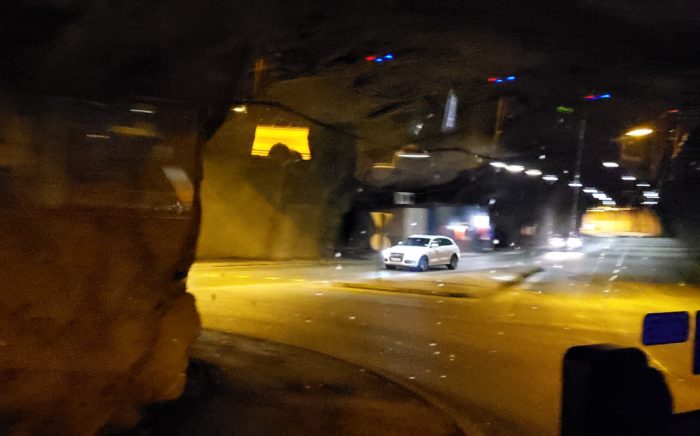
Tromso Turnabout Tunnel
One of the more unusual facets of Tromso is the Tromsoysund Tunnel. It is an undersea highway tunnel which runs under the Tromsovsundet strait. It connects the island of Tromsova with the mainland suburb of Tromsdalen. The tunnel is part of European route Eo8, whose northern end is on the island. It consists of two tubes with two driving lanes. One tube is 2.2 miles long and the other is 2.1 miles in length. The lowest point in the tunnels is 335 ft below sea level, and the maximum grade is 8.2%. The two tubes are linked by 15 service-tunnels.
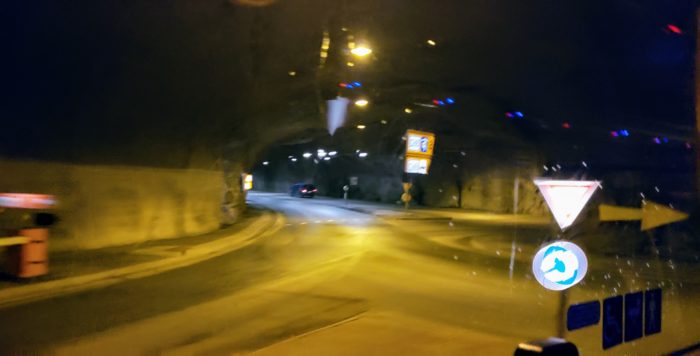
Tromso Turnabout Tunnel
The tunnel opened on 3 December 1994 to relieve Tromsøya’s only other mainland connection, the Tromso Bridge. The bridge had been plagued by severe traffic congestion for more than a decade. The tunnel is located to the north of the bridge, on the island side. It emerges just below the University of Tromso and the University Hospital of North Norway. Both are major sources of traffic between the island and the mainland. On the mainland side it emerges at Tomasjord which is centrally located between the densely populated suburbs of Tromsdalen and Kroken.

Tromso Turnabout Tunnel
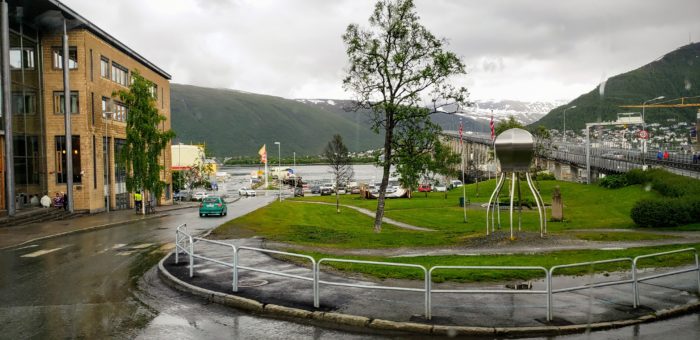
Tromso Bridge View
The Tromsø Bridge is a cantilever road bridge in the city of Tromsø. It is located in Tromsø Municipality in Troms county, Norway. It crosses the Tromsøysundet strait between Tromsdalen on the mainland and the island of Tromsøya. The bridge spans 1,132 yards and it is roughly 125 feet to the surface of the water below. Construction began in 1958 and it opened in 1960.
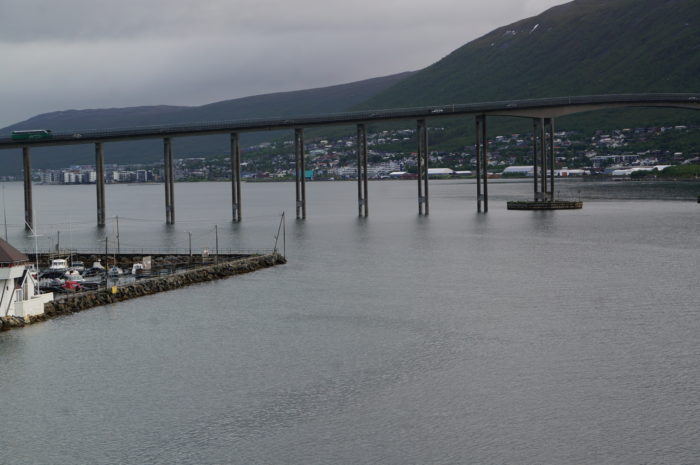
Tromso Bridge
Tromsdalen Church, also known as Ishavskatedralen (The Arctic Cathedral) was dedicated on November 19, 1965. Architect Jan Inge Hovig succeeded in creating a masterpiece. The church was partially motivated by the Opera House in Sydney Australia. Because of this, it has been called “The Opera House of Norway”. Despite its nickname, it is a parish church and not, in fact, a cathedral as it is commonly called. The church is an Evangelical Lutheran within the Church of Norway, and should not to be mistaken with the Tromso Cathedral. The Artic Cathedral is a landmark visible from the Tromsø Sound, the Tromsø Bridge and when landing at Tromsø airport. Construction began in April of 1964 and was completed in 1965. It is made of Cast-in-place aluminum-coated concrete panels. The 11 aluminium-coated concrete panels on each side of the roof produce the cathedral’s form.
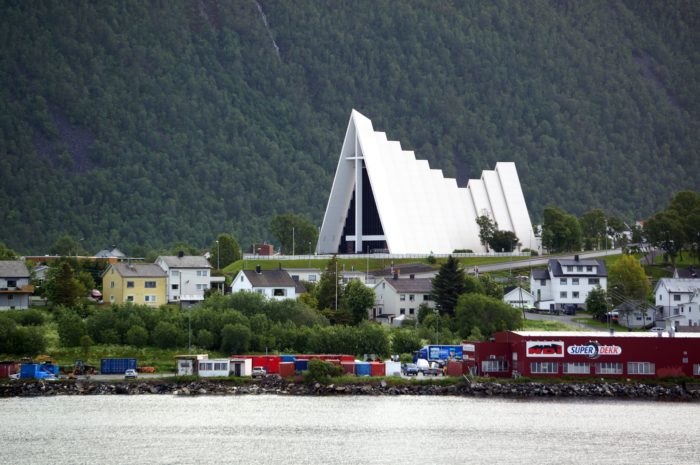
Artic Cathedral
The main entrance on the western side is surrounded by a large glass facade with a distinct cross. The incredible glass mosaic on the eastern side was supplied in 1972. The glass mosaic is one of artist Victor Sparre’s most distinguished works. It depicts God’s hand from which bursts three rays of light: one through Jesus, one through a woman and one through a man. The mosaic pieces are 1.1 inch thick, so on sunny mornings the work becomes almost completely translucent. When the midnight sun radiates from the west, however, the colors become passionate and intense. During the dark months, the complete mosaic is eradicated although you can still see it from the exterior. The glass mosaic dates back to 1972 and was not actually a part of the architect’s conception. The original objective was to use common glass in the east wall as well. Strip lights have been arranged between the 11 layer panels that make up the walls and when darkness falls, the exceptional blueprint of the church is clearly conspicuous from all parts of Tromsø. The exclusive chandeliers of Czech crystal are inspired by icicles and advance the distinctively cool look. The Arctic Cathedral is a beacon in the town, for churchgoers and for travelers in the north.
The oak pews, the large prism chandeliers, the altar rail and pulpit are the most compelling fittings, all of which are in a style that agrees with the cathedral’s passion and simplicity. The church acquired an organ assembled by Grönlunds Orgelbyggeri in 2005, with three manuals, pedal, 42 stops, and 2940 pipes. It replaced the old opus nr. 12 organ delivered by Vestlandske Orgelverksted, Hareid, which had 22 voices and 124 keys. Midnight concerts are now held in the Arctic Cathedral all year long, often including the five choirs of the congregation. In the summer, however, the church is even more available, as the congregation is excited to welcome guests to midnight sun concerts featuring professional musicians. These concerts start just before midnight, so subsequently the audience can step out and enjoy the midnight sun. This has to be a thrill to the 600 people the church seats.
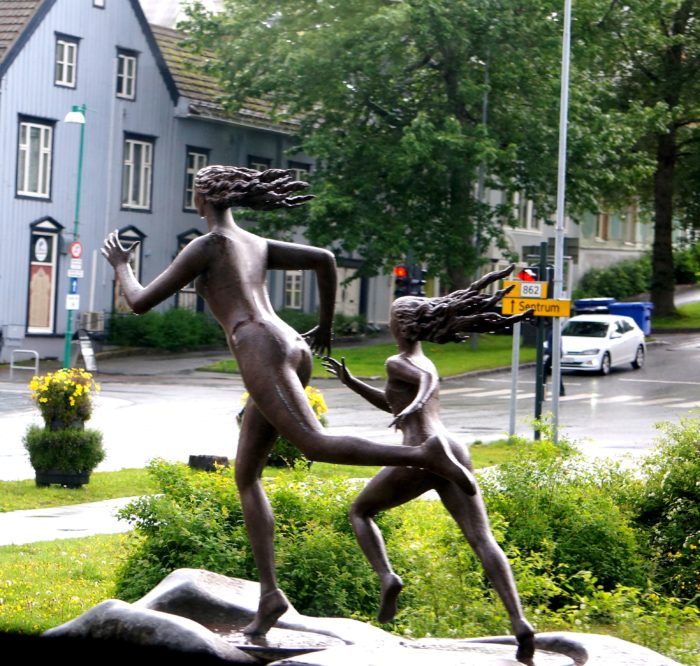
Statue of Running Girls in Tromso Park
As we headed back to the ship the bus passed this statue in a park of two girls running. I was enamored by its beauty and thought I would share this photo. It was a rainy day, but I was able to capture it through the bus’ window. Strangely enough when I looked it up on the Internet it was difficult to locate. I’m not sure if it’s new or what but it basically has no history.
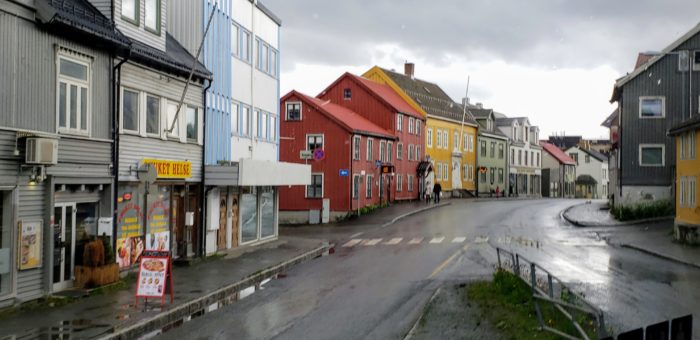
Tromso Business District
A scene from the wet streets of Tromso as we headed back to the ship and dinner. I loved the solitude this photo displayed and the reflections in the standing water.
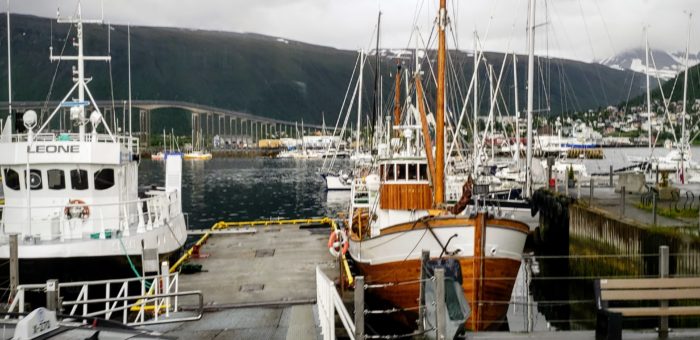
Fabulous Sailing Ship in Tromso Harbor Across the Tromso Bridge

Tromso Marina
We finally arrived back at the harbor and walked back to the ship. Thankfully the rain had ceased and all we had to be concerned with was stepping in the large puddles so as to not soak our shoes. Onward to the next port of Honnigsvag and what an adventure lay before us. I had no idea what lay ahead and how adventurous our next port would be!
*** Portions of our cruise were sponsored by Viking Ocean Cruises. All opinions, as always, are those of my own.


